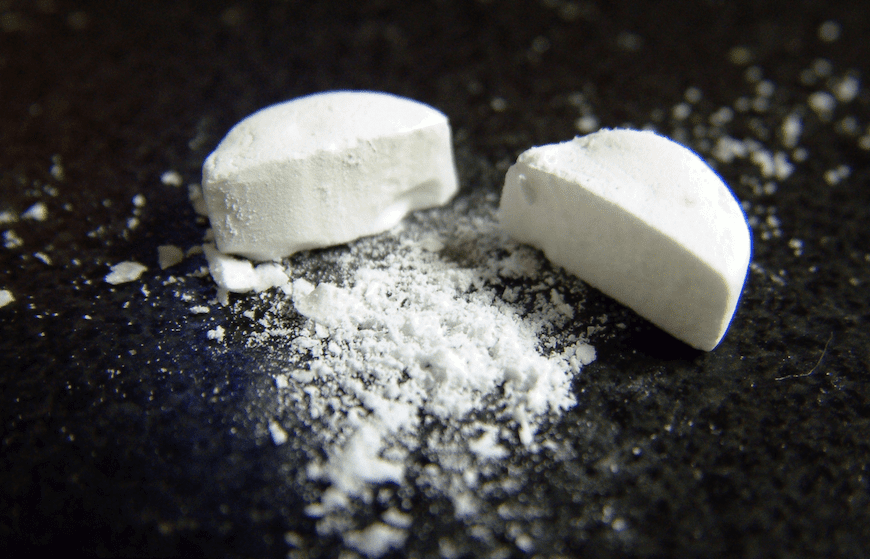Because this piece does not have an abstract, we have provided for your benefit the first 3 sentences of the full text.
Wisco and colleagues’ sobering study surveyed 1,484 US veterans for both traumatic exposure and its relationship to probable PTSD on the PTSD Checklist-5. The study, designed to compare the impact of the meaningful changes in PTSD diagnostic criteria between, DSM-IV and DSM-5, found no major changes affecting PTSD prevalence or comorbid psychiatric disorders from previous studies using DSM-IV criteria despite the addition of 3 symptoms and the partitioning of PTSD diagnostic criteria from 3 to 4 domains in DSM-5, . What is revelatory, however, is how the study highlights the breadth and depth of the mental health burden of US veterans, and helps to parse the relationship between trauma, PTSD, and multiple psychiatric comorbidities in veterans.
This work may not be copied, distributed, displayed, published, reproduced, transmitted, modified, posted, sold, licensed, or used for commercial purposes. By downloading this file, you are agreeing to the publisher’s Terms & Conditions.
See article by Wisco et al


Who Are They, and How Did It Happen?
Wisco and colleagues’ sobering study1 surveyed 1,484 US veterans for both traumatic exposure and its relationship to probable PTSD on the PTSD Checklist-5.2 The study, designed to compare the impact of the meaningful changes in PTSD diagnostic criteria between DSM-IV and DSM-5, found no major changes affecting PTSD prevalence or comorbid psychiatric disorders from previous studies using DSM-IV criteria3,4 despite the addition of 3 symptoms and the partitioning of PTSD diagnostic criteria from 3 to 4 domains in DSM-5. What is revelatory, however, is how the study highlights the breadth and depth of the mental health burden of US veterans, and helps to parse the relationship between trauma, PTSD, and multiple psychiatric comorbidities in veterans.
More than 85% of veterans reported at least 1 traumatic event; the mean number of traumatic events experienced was 3.3. Trauma exposure is ubiquitous, but rates of trauma vary by population. Whereas 51% of women and 61% of men in the National Comorbidity Survey (NCS) reported exposure to trauma meeting the DSM Criterion A definition in the US,5 only 26% of male and 17.7% of female respondents in a representative community sample in Germany did,6 as opposed to 89.6% of people surveyed in the Detroit Area Survey of Trauma,7 highlighting some of the psychological consequences of the pervasive violence in the United States, particularly in inner-city groups. This study, therefore, places US veterans at the higher end of populations studied for trauma exposure. Interestingly, only 38.2% of trauma-exposed veterans reported combat trauma. Most trauma exposure in veterans therefore came from non-military experience.
Lifetime prevalence of probable PTSD among veterans was 8.1%, and 4.7% met criteria within the past month. These rates are similar to some non-military samples (again from Detroit7), but by comparison, despite high rates of traumatic occurrences, PTSD rates in the non-military community have run as low as 1% in males and 2.2% in females lifetime,6,8 with 1.1% twelve-month prevalence in the World Mental Health survey.9 As in other PTSD prevalence studies conducted in non-veteran populations, women veterans were more likely to develop probable PTSD than men posttrauma (17.5% vs 8.5%).6,10 Probable PTSD rates declined with age in this sample (from the disturbingly high rate of 33% in the 18- to 29-year-old trauma-exposed cohort to 4.8% among those aged 60 years or older), findings similar to data on non-military risk by age cohort in the non-veteran population.11 Risk rates for specific types of trauma exposure echo findings from non-military populations11,12: sexual trauma from childhood or adulthood tops the charts for likely development of PTSD (28% probability of lifetime PTSD with any exposure to forced sexual contact in childhood). Traumatic combat exposure, of course, also produced high rates of PTSD (23%).
Psychiatric comorbidity of PTSD with major depression, anxiety disorders, substance use disorders, and suicidality is enormous, with an odds ratio (OR) of 62.8 of current generalized anxiety disorder in subjects reporting past-month PTSD and an OR of 26.5 for concurrent major depression, compared with those without PTSD. This comorbidity compounded patients’ burdens.
What accounts for such high rates of trauma and PTSD among our veterans, particularly given the relatively low numbers in the sample who experienced combat? Does our military unwittingly recruit for traumatized individuals, or does military experience apart from combat (eg, via sexual assault) make it worse? This study cannot directly answer these questions. Nevertheless, we have long known that childhood trauma, chronic adversity, and familial stressors increase risk for PTSD and for its biological markers after a traumatic event in adulthood.6,13 Rates of re-traumatization among traumatized individuals are high. Nearly 20% of patients reporting 12-month PTSD report multiple traumas, and greater trauma exposure unsurprisingly correlates with greater functional impairment as well as greater exposure to ongoing trauma in the form of intimate partner violence.9 Furthermore, as PTSD Criterion B (re-experiencing trauma) highlights, patients re-experience traumatic events in various ways, not all involving flashbacks or nightmares. These patients are not uncommonly drawn to experiences that re-evoke their trauma for unconscious reasons, including unconscious attempts to undo a terrifying, passive, helpless experience and transform it into an active one.14 Such unconscious processes can lead patients with PTSD to place themselves yet again in harm’s way—such as enlisting in the military.9,15
Insecure attachment styles and separation anxiety can increase risk of development of PTSD.15-17 Reciprocally, PTSD itself can unmask/lead to insecure attachment relationships even in adulthood.16,17 The authors note the huge public health burden of PTSD in veterans. It will benefit veterans and civilians with PTSD for us to intervene rapidly and to attempt to better pinpoint risk factors around which to structure earlier interventions.16-18
Submitted: October 8, 2015; accepted October 9, 2015.
Potential conflicts of interest: Dr Milrod receives book royalties from Taylor & Francis, LLC.
Funding/support: Dr Milrod is supported by a fund in the New York Community Trust established by DeWitt Wallace.
Role of the sponsor: The providers of funding had no role in the preparation, review, or approval of the manuscript.
REFERENCES
1. Wisco BE, Marx BP, Miller MW, et al. Probable posttraumatic stress disorder in the US veteran population according to DSM-5: results from the National Health and Resilience in Veterans Study. J Clin Psychiatry. 2016;77(11):1503-1510.
2. Weathers FW, Litz BT, Keane TM, et al. The PTSD checklist for DSM-5 (PCL-5). Scale available from the National Center for PTSD Web site. www.ptsd.va.gov. 2013.
3. Terhakopian A, Sinaii N, Engel CC, et al. Estimating population prevalence of posttraumatic stress disorder: an example using the PTSD checklist. J Trauma Stress. 2008;21(3):290-300. PubMed doi:10.1002/jts.20341
4. Wisco BE, Marx BP, Wolf EJ, et al. Posttraumatic stress disorder in the US veteran population: results from the National Health and Resilience in Veterans Study. J Clin Psychiatry. 2014;75(12):1338-1346. PubMed doi:10.4088/JCP.14m09328
5. Kessler RC, Sonnega A, Bromet E, et al. Posttraumatic stress disorder in the National Comorbidity Survey. Arch Gen Psychiatry. 1995;52(12):1048-1060. PubMed doi:10.1001/archpsyc.1995.03950240066012
6. Perkonigg A, Kessler RC, Storz S, et al. Traumatic events and post-traumatic stress disorder in the community: prevalence, risk factors and comorbidity. Acta Psychiatr Scand. 2000;101(1):46-59. PubMed doi:10.1034/j.1600-0447.2000.101001046.x
7. Breslau N, Kessler RC, Chilcoat HD, et al. Trauma and posttraumatic stress disorder in the community: the 1996 Detroit Area Survey of Trauma. Arch Gen Psychiatry. 1998;55(7):626-632. PubMed doi:10.1001/archpsyc.55.7.626
8. McFarlane AC. Phenomenology of post-traumatic stress disorder. In: Stein DJ, Hollander E, Rothbaum BO, eds. APA Textbook of Anxiety Disorders. Washington, DC: APA Press; 2002:359-373.
9. Karam EG, Friedman MJ, Hill ED, et al. Cumulative traumas and risk thresholds: 12-month PTSD in the World Mental Health (WMH) surveys. Depress Anxiety. 2014;31(2):130-142. PubMed doi:10.1002/da.22169
10. Olaya B, Alonso J, Atwoli L, et al. Association between traumatic events and post-traumatic stress disorder: results from the ESEMeD-Spain study. Epidemiol Psychiatr Sci. 2015;24(2):172-183. PubMed doi:10.1017/S2045796014000092
11. Creamer M, Burgess P, McFarlane AC. Post-traumatic stress disorder: findings from the Australian National Survey of Mental Health and Well-being. Psychol Med. 2001;31(7):1237-1247. PubMed doi:10.1017/S0033291701004287
12. Kawakami N, Tsuchiya M, Umeda M, et al; World Mental Health Survey Japan. Trauma and posttraumatic stress disorder in Japan: results from the World Mental Health Japan Survey. J Psychiatr Res. 2014;53:157-165. PubMed doi:10.1016/j.jpsychires.2014.01.015
13. Koenen KC, Moffitt TE, Poulton R, et al. Early childhood factors associated with the development of post-traumatic stress disorder: results from a longitudinal birth cohort. Psychol Med. 2007;37(2):181-192. PubMed doi:10.1017/S0033291706009019
14. Busch F, Milrod B, Singer M, et al. Panic Focused Psychodynamic Psychotherapy-eXtended Range. Psychodynamic psychotherapy for anxiety disorders: A Transdiagnostic Treatment Manual. New York, NY: Taylor & Francis, LLC; 2012.
15. Corradi RB. The repetition compulsion in psychodynamic psychotherapy. J Am Acad Psychoanal Dyn Psychiatry. 2009;37(3):477-500. PubMed doi:10.1521/jaap.2009.37.3.477
16. Silove D, Alonso J, Bromet E, et al. Pediatric-onset and adult-onset separation anxiety disorder across countries in the World Mental Health Survey. Am J Psychiatry. 2015;172(7):647-656. PubMed doi:10.1176/appi.ajp.2015.14091185
17. Milrod B. An epidemiological contribution to clinical understanding of anxiety. Am J Psychiatry. 2015;172(7):601-602. PubMed doi:10.1176/appi.ajp.2015.15030312
18. Milrod B, Markowitz JC, Gerber AJ, et al. Childhood separation anxiety and the pathogenesis and treatment of adult anxiety. Am J Psychiatry. 2014;171(1):34-43. PubMed doi:10.1176/appi.ajp.2013.13060781
aDepartment of Psychiatry, Weill Medical College of Cornell University, New York, New York
*Corresponding author: Barbara Milrod, MD, Department of Psychiatry, Weill Medical College of Cornell University, 525 East 68 St, New York, NY 10065 ([email protected]).
J Clin Psychiatry 2016;77(11):e1497-e1498
dx.doi.org/10.4088/JCP.15com10448
© Copyright 2016 Physicians Postgraduate Press, Inc.
This PDF is free for all visitors!




